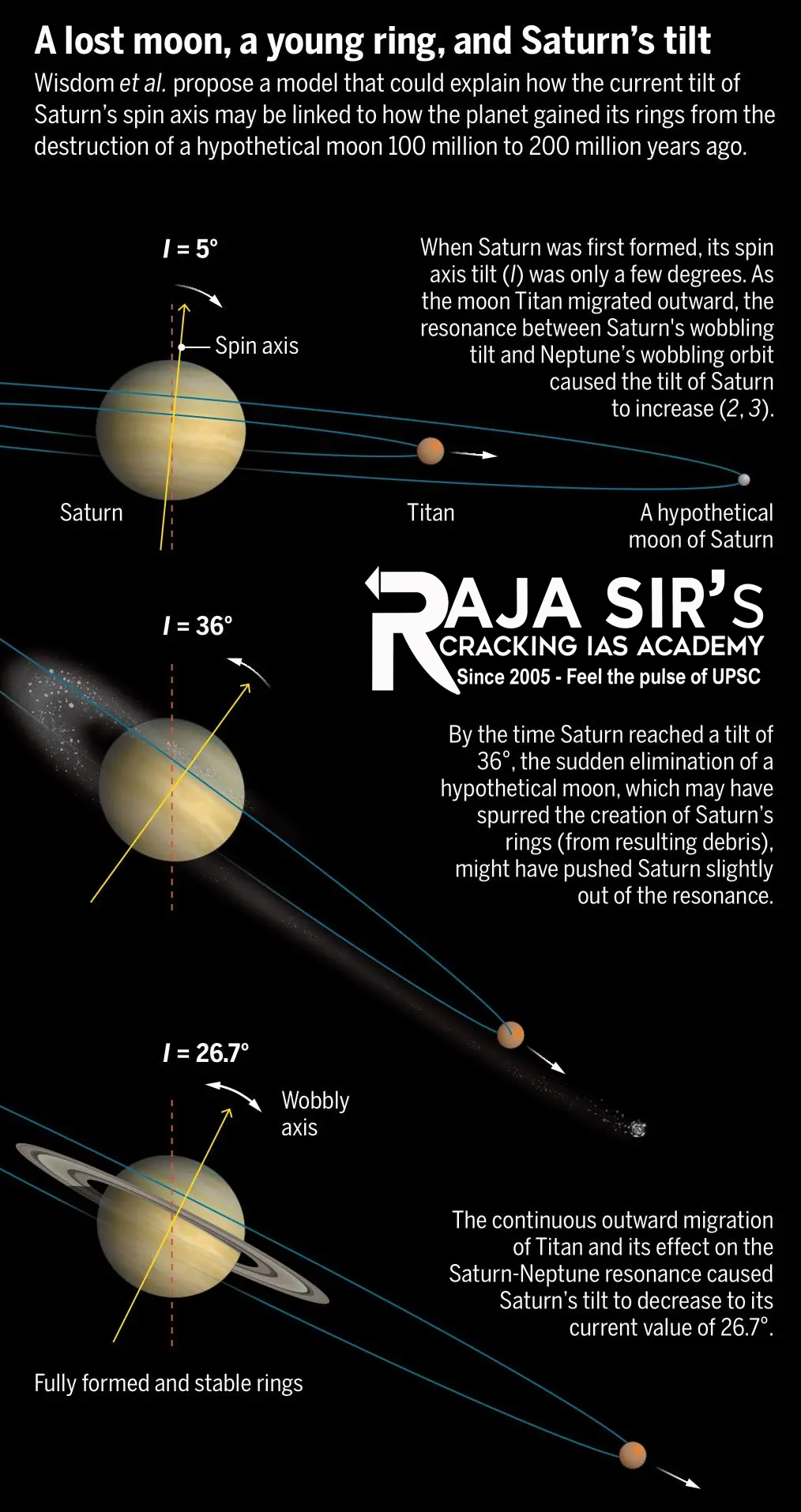- Home
- Prelims
- Mains
- Current Affairs
- Study Materials
- Test Series
Saturn's rings set to 'disappear' briefly in March 2025
Recently, NASA confirmed that Saturn''s rings will briefly disappear in March 2025 due to their alignment with Earth, making them appear edge-on from earth.
- This optical phenomenon occurs every 13 to 15 years, with the last occurrence in 2009.
- Saturn takes about 29.4 Earth years to complete one orbit around the Sun and is tilted at an angle of 26.73 degrees so rings appear to change orientation. In March 2025, only the edges of the rings will be visible, reflecting minimal light.
Saturn and its Rings
- Saturn is the sixth planet from the Sun and the second largest (after Jupitar) in the solar system.
- It has a ring system, made up of ice and rock, which is the most complex among all planets.
- Saturn''s rings span about 282,000 kilometers in width but are incredibly thin, measuring just 10 to 30 meters thick.
- The planet has 7 primary rings. Each ring orbits Saturn at different speeds.
- If laid edge-to-edge, Saturn’s ring system could stretch the distance between Earth and the Moon.
- As per NASA, Saturn has the highest number of moons (146) in the solar system. Like Jupiter, Saturn is a gaseous planet primarily composed of hydrogen and helium.
- Missions to Saturn: Pioneer 11, Voyager 1, and Voyager 2, Cassini spacecraft.
- NASA estimates that Saturn''s rings will permanently disappear in the coming 300 million years due to "ring rain," a process that drains water from the rings at a rapid rate.
Saturn''s Tilt
- Substantial Tilt: Saturn has a tilt of 26.73 degrees and is unlikely to have had a tilt during its formation stages.
- Currently, Neptune, Uranus and Saturn have a substantial tilt, suggesting that this feature did not arise during the formation stages.
- Reason for Tilt: Various theories suggest that Saturn got its tilt due to gravitational interactions with its neighbour Neptune.
- But the new study argues that Saturn is no longer under Neptune’s gravitational influence.
- Further, it stated that instead, Titan — Saturn’s largest satellite — may have been responsible, as per observations from NASA’s Cassini spacecraft, which orbited Saturn from 2004-2017.
- Titan’s Migration: Titan is migrating from Saturn at about 11 centimetres per year, 100 times faster than previous estimates.
- Titan’s fast migration caused the planet to tilt further, reducing Nepturn’s gravitational influence on Saturn.
- Role of Former Moon (Chrysalis): Scientists conducted simulations of the planet’s axis of rotation and how it has changed over time, it revealed that a former moon could be involved, as removing the moon gives Saturn its tilt, according to the model.
- Chrysalis likely orbited Saturn for several billion years, roughly 160 million years ago, Chrysalis became unstable and came too close to its planet. This encounter likely pushed the moon away or destroyed it.










 Latest News
Latest News
 General Studies
General Studies